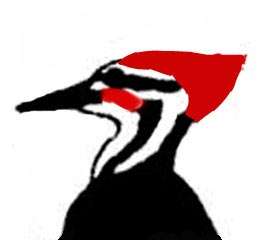While Vermont’s forest and wetland bird species are generally doing well, a recent survey documented a significant decline of grassland and shrubland birds.
The Vermont Breeding Bird Atlas, carried out every 25 years, is a population survey that aims to map the distribution of all of the breeding birds in the state. Using a grid system of 5-kilometer blocks, about 350 volunteers documented the species that breed in 365 randomly selected areas. By comparing this year’s results to those of the first atlas, which was conducted in the 1970s, trends emerge that are used by state and private land protection agencies to prioritize conservation activities. The next atlas will be conducted in the 2030s.
“Grassland and shrubland birds are declining just about everywhere, partly because forests are maturing,” said Rosalind Renfrew, a conservation biologist at the Vermont Center for Ecostudies, which conducted the survey. “Even though some may not have been a major part of our landscape in the past, I believe that we should do our best to manage for these species where they now breed.”
The distribution of forest birds, on the other hand, appears to be stable, thanks to the same forest maturation. “The birds that need large blocks of forest habitat are holding their own,” Renfrew said. “As a group, forest interior species appear to be stable in their distribution. The number of species that gained blocks and those that lost blocks were more or less equal.”
Canada warbler is one species that experienced a sharp decline, having been found in one-third fewer blocks than it occupied during the first atlas. Whippoorwill, a bird that needs early successional habitat, also declined precipitously, and may be proposed for the state’s threatened list. Wood thrush declined, too, but only from the Northeast Kingdom. “It’s still a common species, but they’ve been declining in various parts of their range,” Renfrew said. “It might be that they’re disappearing from the more marginal habitat up there.”
Renfrew said that some boreal species experienced notable declines, including rusty blackbird (26 percent), olive-sided flycatcher (45 percent), Lincoln’s sparrow (30 percent), and boreal chickadee (73 percent). Vermont is at the southern edge of the breeding range of these species.
On the plus side, the atlas noted the first record of red crossbill breeding in Vermont, and barred owls were found in 34 more blocks than in the previous atlas, a 36 percent increase. Renfrew said that the owl may have benefited from the maturation of the forest, which may be providing it with more nesting cavities. Confounding that speculation, however, is the finding that northern saw-whet owl and eastern screech owl did not experience similar increases.
Other species that were documented breeding in Vermont for the first time include the great egret, sandhill crane, greater black-backed gull, Caspian tern, and fish crow.


